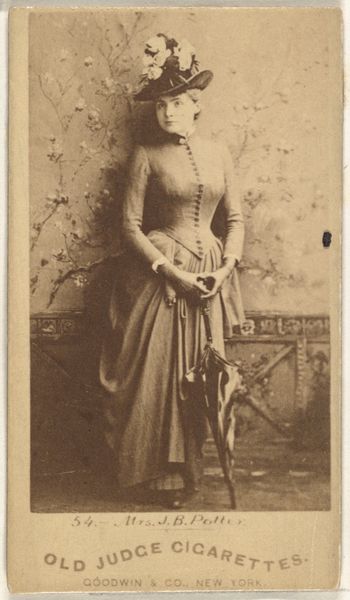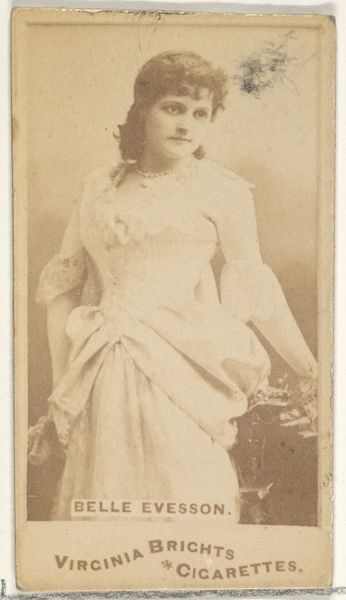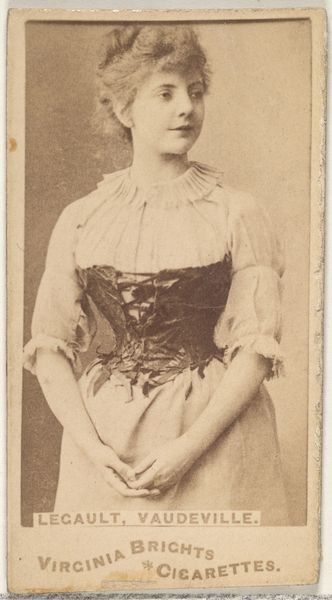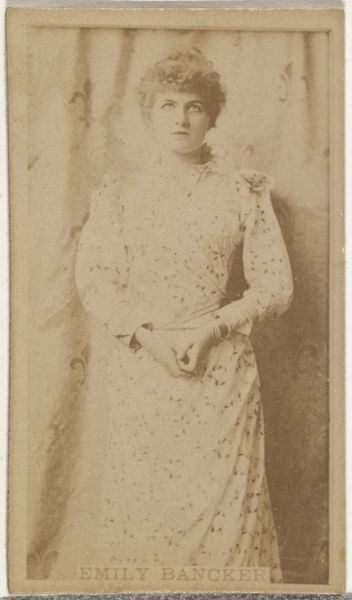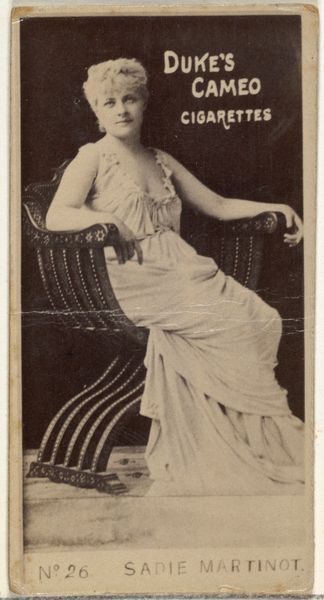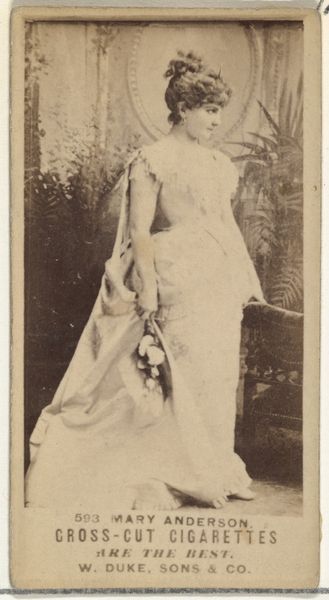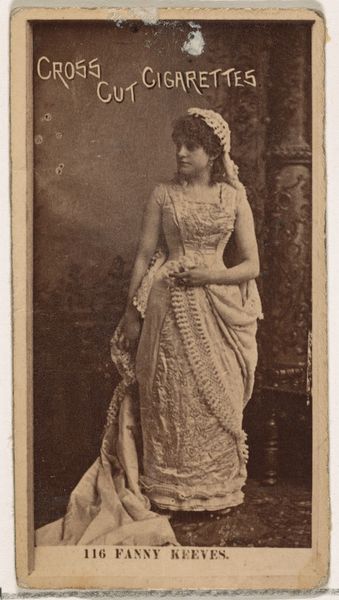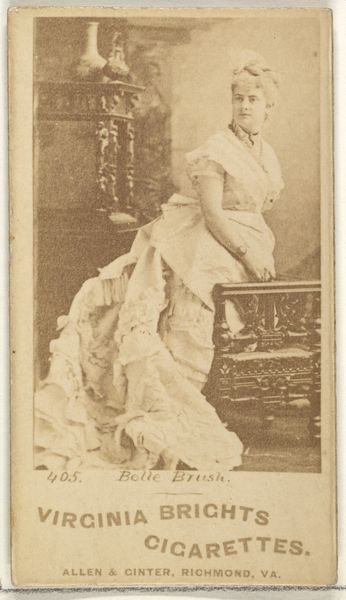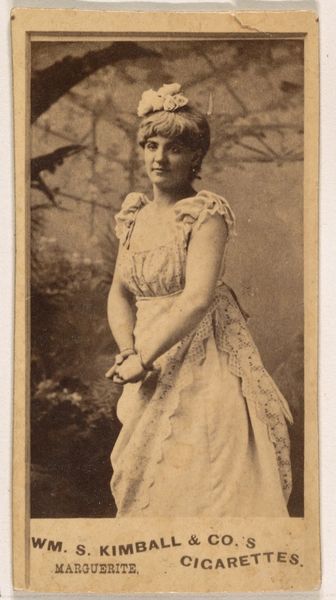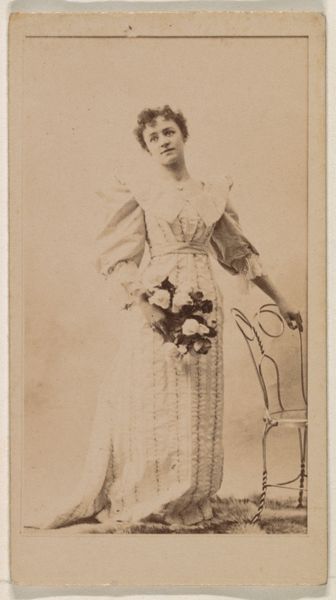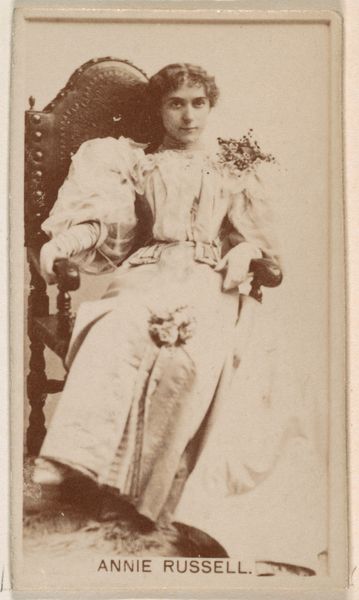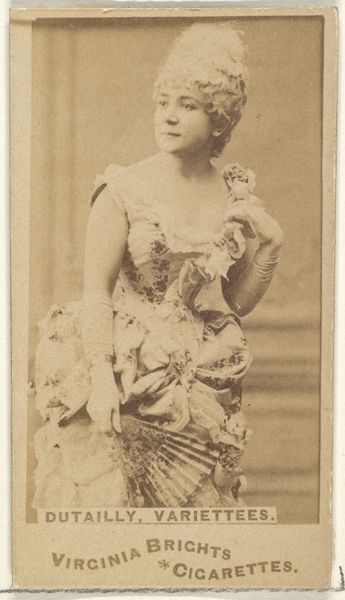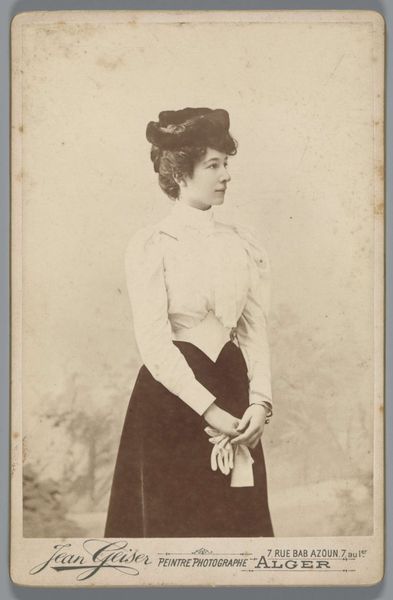
Rosine Vokes, from the Actresses series (N245) issued by Kinney Brothers to promote Sweet Caporal Cigarettes 1890
0:00
0:00
drawing, print, photography
#
portrait
#
drawing
# print
#
photography
Dimensions: Sheet: 2 1/2 × 1 7/16 in. (6.4 × 3.7 cm)
Copyright: Public Domain
Editor: This is "Rosine Vokes," a print made around 1890 by the Kinney Brothers Tobacco Company, part of their "Actresses" series promoting Sweet Caporal Cigarettes. It’s fascinating how something like a tobacco card captures an actress of the time, but it's more utilitarian than artistic, I suppose. What jumps out to you about this image? Curator: I'm struck by how this seemingly simple tobacco card reveals complex layers of 19th-century production. Kinney Brothers were engaging in a then-burgeoning world of mass-produced ephemera; How does the commodification of Rosine Vokes, transformed into a selling point, sit with you? Editor: That’s interesting…I hadn’t thought about it like that. So it's not really about the actress, but about shifting cultural values. Is the value in the artwork only its original function, or can we derive something else from this print today? Curator: Exactly! And consider the laborers involved: from the photographers, printmakers, and factory workers who manufactured these cards to the tobacco farmers whose products funded this whole endeavor. These materials—the paper, the ink, the photograph itself—represent countless hours of labor and resources extracted and transformed under specific socioeconomic conditions. What does this level of production imply? Editor: It implies that the production chain for this type of ephemera was enormous, even a century and a half ago. Thinking about that makes it seem like it is more than just a simple commercial portrait. It becomes a document of industry and labor. I see that even a commonplace item can unlock a richer understanding of its era. Curator: Precisely. By interrogating the materiality and the social context of production, we unearth how this "artwork" is inextricably linked to broader systems of labor, consumption, and representation. There is a wealth of information within this commercial artifact that allows us to see the past more clearly.
Comments
No comments
Be the first to comment and join the conversation on the ultimate creative platform.
